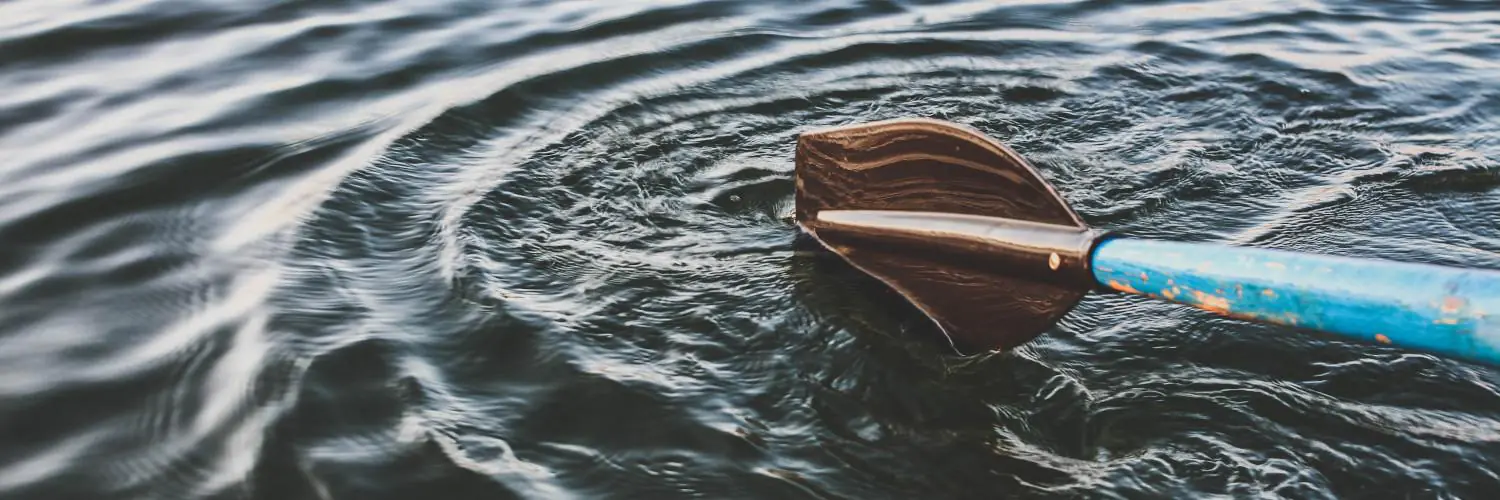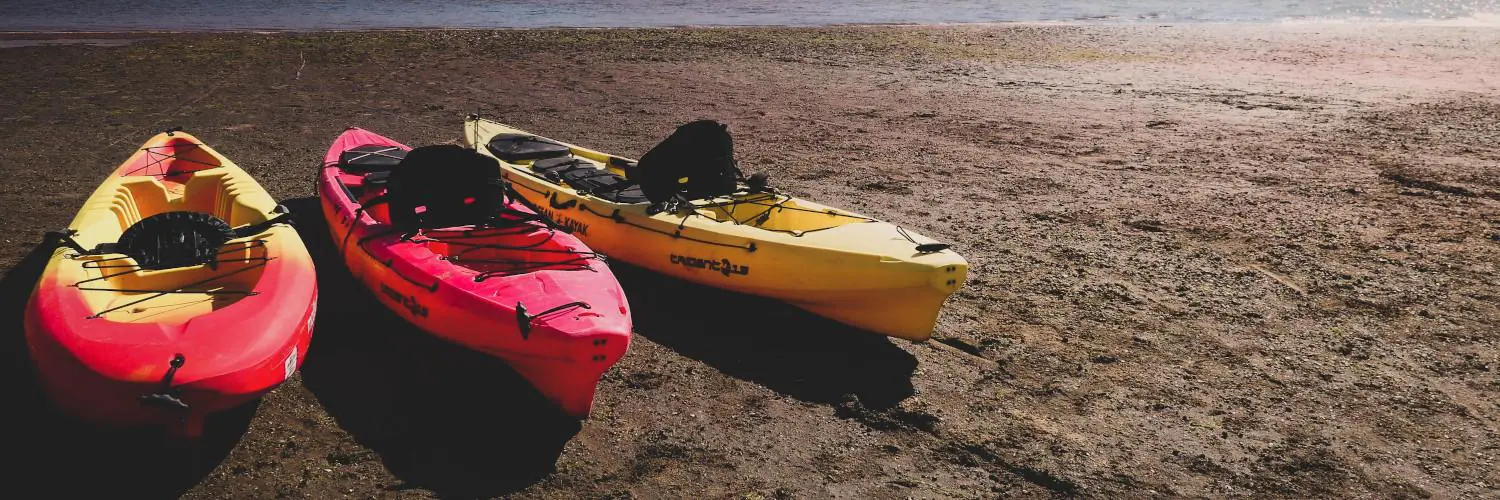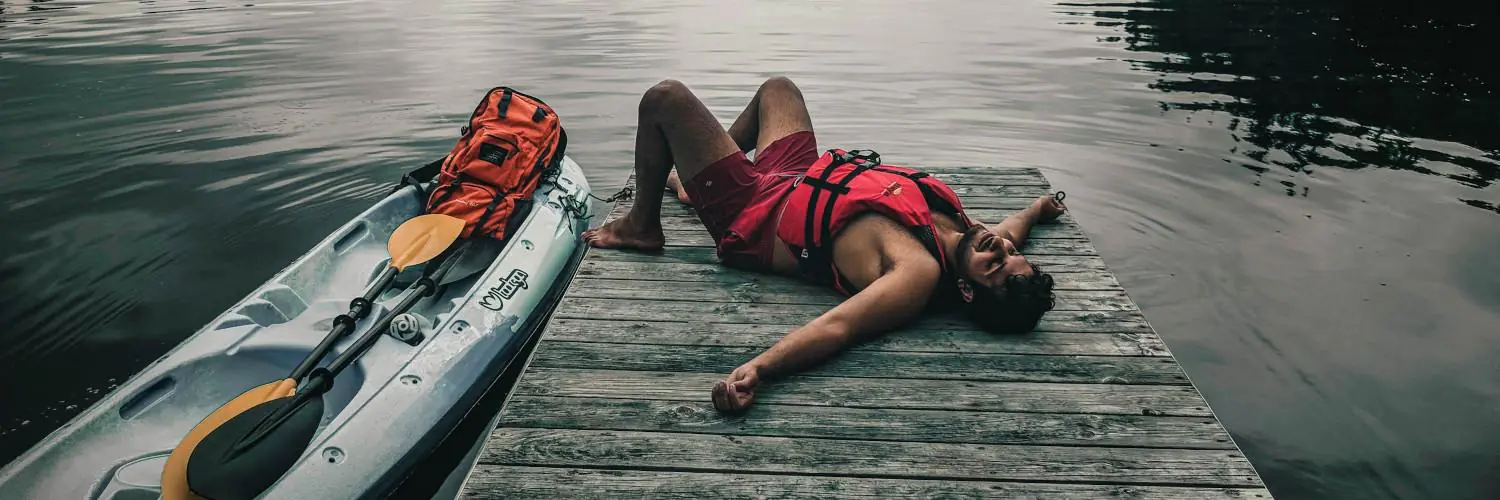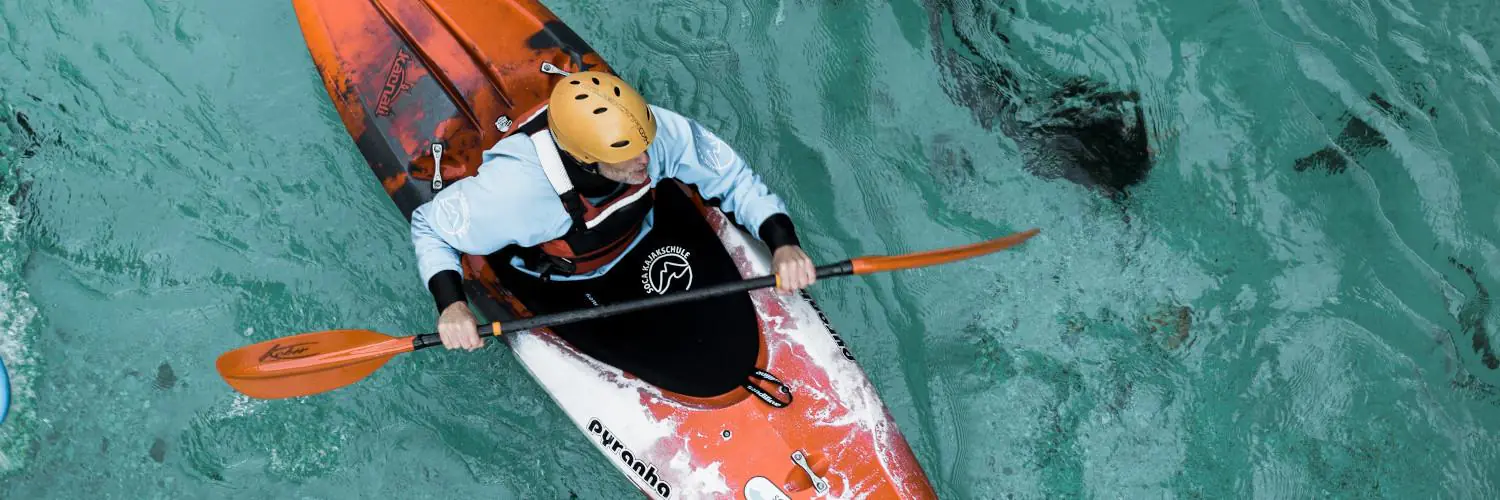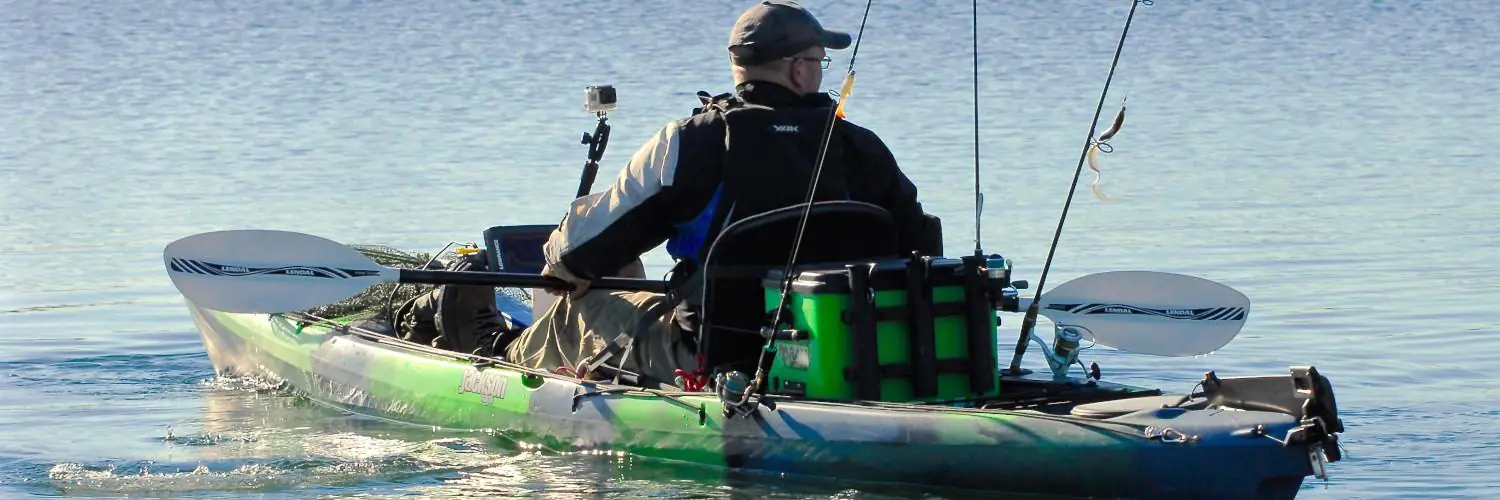Fishing enthusiasts often debate the merits of kayaks versus bass boats. Both options have their strengths for catching fish, but they offer very different experiences on the water. Kayaks are more affordable, portable, and allow access to shallow areas, while bass boats provide speed, comfort, and extra storage for gear.
Kayak fishing has grown in popularity due to its simplicity and connection to nature. Anglers can quietly glide into tight spots and feel every bite. Bass boats, on the other hand, let fishers cover more water quickly and bring along more equipment. They also offer a stable platform for casting and fighting big fish.
The choice between a kayak and bass boat depends on personal preferences, fishing style, and budget. Kayaks shine in small bodies of water or areas with limited access. Bass boats excel in large lakes and for tournament fishing. Some anglers even use both, picking the right vessel for each trip.
Table of Contents
Understanding Fishing Kayaks
Fishing kayaks are small, nimble watercraft designed for anglers. They come in different styles and offer unique benefits for fishing in various water conditions.
Types of Fishing Kayaks
Sit-on-top kayaks are popular for fishing. They have an open deck that’s easy to move around on. Some have built-in rod holders and storage areas.
Sit-inside kayaks provide more shelter from the elements. They’re good for colder weather or rough waters.
Pedal kayaks use foot-powered propellers or flippers. This leaves hands free for fishing. They’re faster than paddle kayaks but cost more.
Inflatable fishing kayaks are portable and easy to store. They’re less durable than hard-shell models but work well for occasional use.
Advantages of Kayak Fishing
Kayaks are cheaper than most fishing boats. A good fishing kayak costs $500 to $2000.
They’re easy to transport. Many fit on car roof racks or in truck beds.
Kayaks can access shallow waters and tight spots that bigger boats can’t reach. This opens up new fishing areas.
They’re quiet on the water. This helps anglers sneak up on fish without scaring them.
Kayak fishing is a good workout. Paddling burns calories and builds upper body strength.
Limitations of Fishing Kayaks
Kayaks have less space for gear than larger boats. Anglers must pack light and choose gear carefully.
They’re slower than motorized boats. This limits the area you can cover in a day.
Kayaks are less stable than wider boats. This can make it harder to stand and cast, especially for beginners.
Safety is crucial in kayaks. They’re more affected by wind and waves than bigger boats. Life jackets are a must.
Kayaks have weight limits. This restricts how much gear and fish you can carry.
Bass Boats Explored
Bass boats are purpose-built fishing vessels designed for catching bass. These boats offer speed, stability, and specialized features for anglers.
Characteristics of Bass Boats
Bass boats are sleek and low-profile. They range from 16 to 25 feet long. Most have a wide, flat deck for casting. The hull is shallow, letting them access tight spots.
Key features include:
• Powerful outboard motors (75-300 horsepower) • Trolling motors for quiet maneuvering • Live wells to keep fish fresh • Rod lockers for gear storage • Fish finders and GPS units
Bass boats often have pedestal seats for comfort. Some models include coolers and tackle storage systems.
Why Choose a Bass Boat for Fishing
Bass boats excel at covering large areas quickly. Their speed helps anglers reach distant fishing spots. The stable platform is great for standing and casting all day.
These boats carry lots of gear. Anglers can bring multiple rods and tackle boxes. Live wells keep caught fish healthy for catch-and-release tournaments.
Bass boats shine in competitions. Their speed and features give tournament anglers an edge. The boats also work well for recreational fishing on lakes and rivers.
Bass Boats: Potential Drawbacks
Cost is a major factor. New bass boats can cost $20,000 to $100,000. Ongoing expenses include fuel, maintenance, and storage.
Bass boats need deep water to operate. They struggle in shallow or weedy areas. Their size limits access to some small lakes and rivers.
Trailering and launching these boats takes effort. You need a suitable vehicle to tow them. Learning to maneuver a bass boat takes practice.
Wind affects these light boats. Rough water can make fishing uncomfortable or unsafe. Bass boats work best in calm conditions on open water.
Kayak vs. Bass Boat: Head-to-Head Comparison
Kayaks and bass boats offer different fishing experiences. Each has pros and cons in key areas like size, cost, and where you can use them.
Capacity and Comfort
Kayaks are small and fit 1-2 people. They have limited space for gear and fish. Seats can be basic or upgraded for more comfort.
Bass boats hold 2-4 people easily. They have lots of storage for rods, tackle, and coolers. Plush seats and standing room make long trips comfy.
Kayaks let you feel close to the water. Bass boats give you more room to move around.
Maneuverability and Stability
Kayaks are easy to steer in tight spots. They can access shallow water and narrow passages. Sit-on-top models are quite stable for casting.
Bass boats are less nimble but more stable on open water. They handle waves better. Power steering and trolling motors aid control.
Kayaks rely on paddles or pedals. Bass boats use gas engines for speed.
Cost Implications
Kayaks are much cheaper. Basic models start around $300. High-end fishing kayaks cost $1,000-$3,000.
Bass boats are a big investment. New ones range from $20,000 to $50,000 or more. Used boats can be found for less.
Kayaks have low upkeep costs. Bass boats need fuel, maintenance, and insurance.
Fishing Locations and Access
Kayaks shine in small bodies of water. They’re great for ponds, creeks, and tight coves. No boat ramp needed – just carry and launch.
Bass boats excel on large lakes and rivers. They cover more water fast. But they need proper launch sites.
Kayaks can fish spots boats can’t reach. Bass boats let you explore vast areas in a day.
Safety gear is crucial for both. Life jackets, lights, and communication devices are must-haves.
Safety and Regulations
Fishing kayaks and bass boats have different safety needs and legal rules. It’s vital to know these before heading out on the water.
Safety Considerations on the Water
Kayaks and bass boats face unique risks. Kayaks are small and sit low in the water. This can make them hard to see. Kayakers should wear bright colors and use a flag. They also need to be careful of waves and wind.
Bass boats are bigger and faster. They can tip if not driven well. Drivers must watch for other boats and objects in the water. Both kayaks and bass boats need life jackets for all people on board. A first aid kit is a must-have item too.
Kayakers should bring a whistle to call for help. Bass boats need fire extinguishers and working lights. Both should have a way to contact others in case of trouble.
Legal and Regulatory Guidelines
Kayaks and bass boats must follow different rules. Kayaks often don’t need to be registered. Bass boats usually do. The rules can change based on where you fish.
Bass boats need insurance in many places. Kayaks typically don’t. Boat drivers may need a license or safety course. This depends on their age and where they boat.
Both kayaks and bass boats must follow local fishing laws. These include:
- Catch limits
- Fishing seasons
- No-wake zones
- Protected areas
It’s important to check the rules before each trip. They can change over time or in different spots.
Engaging With the Fishing Community
Fishing communities offer many ways to connect with other anglers. These groups bring together kayak and bass boat enthusiasts to share knowledge, experiences, and build friendships.
Forums and Discussion Platforms
Online forums are popular gathering spots for fishing fans. Bass Boat Central and Kayak Bass Fishing have active message boards. Members post about gear, techniques, and local fishing spots. Many forums have sections for both kayak and bass boat fishing. This lets anglers compare notes across vessel types.
Some key forum features include:
- Member profiles
- Private messaging
- Photo galleries
- Classified ads
These tools help build connections between anglers. Newcomers can ask questions and get advice from more experienced members.
Events and Giveaways
Fishing clubs and tackle shops often host events. These bring together kayak and bass boat anglers in person. Common activities include:
- Fishing tournaments
- Demo days to try new gear
- Seminars on fishing skills
Many events have prize giveaways. Prizes might include fishing rods, lures, or even kayaks and boats.
Some groups run online contests too. These may ask anglers to share photos or stories. Winners get fishing gear or gift cards. Events and giveaways create excitement in the community.
Sharing Experiences and Tips
Social media is a key place for anglers to share. Facebook groups focus on specific types of fishing. Instagram lets people post catch photos and videos. YouTube channels show detailed how-to guides.
Anglers share:
- Fishing reports
- Gear reviews
- Rigging tips
This info helps both kayak and bass boat users improve their skills. Photo galleries let anglers show off their catches. Leaderboards track top anglers in tournaments. Activity streams show the latest community posts and photos.
These tools bring the fishing community closer. They spark discussions and friendly competition between all types of anglers.


